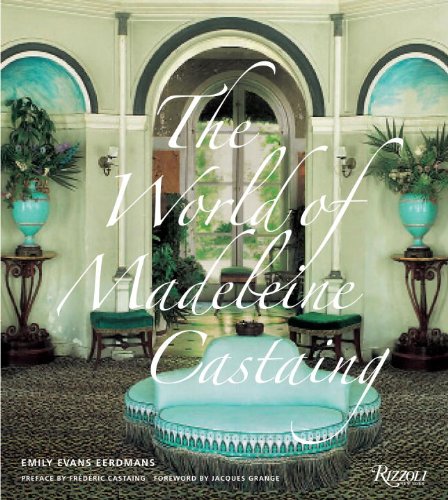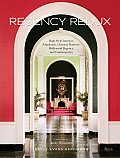It is hard to find any better embodiment of the Art Deco style than the paintings of Tamara de Lempicka. Just as her work captured the new modern spirit of the twenties and early thirties, Tamara's life was equally daring, glamorous, and with a finely sharpened edge.

In Passion by Design, Tamara's biography by her daughter Kizette, she is said to have committed herself to the life of gesture in which every detail of her outward appearance was attended to with great thought, from the decor of her studios to the haute couture she wrapped herself in. For example, although she depicted herself above in a green Bugatti, she actually drove a yellow and black Renault. "When I drove in it, I wore a pullover of the same bright yellow, always with a black skirt and hat. I was dressed like the car and the car like me." That's the kind of detail I'm talking about.
As Jean Cocteau foretold, her love of both art and high society was ultimately a disastrous cocktail. As the story of art was pushed along by abstract expressionism, it was Tamara's parties and clothing that magazines wrote about, not her work.
Here, a few of the settings for her spectacular life of gesture:
 Her studio on the rue Méchain designed by Robert Mallet-Stevens, early 1930s, furniture by Rene Herbst with light grey walls and ceiling.
Her studio on the rue Méchain designed by Robert Mallet-Stevens, early 1930s, furniture by Rene Herbst with light grey walls and ceiling. The studio today which is currently the residence of another woman of style, Amanda Eliasch
The studio today which is currently the residence of another woman of style, Amanda Eliasch Tamara's sister, Adrienne de Montaut, designed the upstairs smoking room paneled in polished walnut. Tamara's initials are woven into the brown upholstery.
Tamara's sister, Adrienne de Montaut, designed the upstairs smoking room paneled in polished walnut. Tamara's initials are woven into the brown upholstery.In 1933, she married patron and lover (but just one of many, mind you) Baron Raoul Kuffner. In 1939 with war looming, they sailed to the States where they lived until the early 1960s.
 The double height living room gave excellent northern light at their apartment on 322 East 57th Street, built in 1929 as a studio hotel and also once home to Lily Pons.
The double height living room gave excellent northern light at their apartment on 322 East 57th Street, built in 1929 as a studio hotel and also once home to Lily Pons. Dining Room
Dining RoomTamara decorated the apartment with antiques taken from the Baron's Hungarian estates. Their friends, such as Helena Rubinstein's sister Muzka Bernard, called upon her to decorate their places.
After the war, Tamara returned to her rue Méchain studio and redecorated it in the rococo style.
 The 1950s Art & Décoration article which featured Lempicka's new scheme commented on her intentional juxtaposition of the clean, severe architecture with the bourgeois neo-Louis XV style.
The 1950s Art & Décoration article which featured Lempicka's new scheme commented on her intentional juxtaposition of the clean, severe architecture with the bourgeois neo-Louis XV style. At the time, they judged the results cleverly tongue-in-cheek, with Lempicka's sense of refinement and style pushing it beyond exquisitely bad taste. Only the French would dare a discussion on the chic of kitsch in a decorating mag!
At the time, they judged the results cleverly tongue-in-cheek, with Lempicka's sense of refinement and style pushing it beyond exquisitely bad taste. Only the French would dare a discussion on the chic of kitsch in a decorating mag!As all styles are destined to become démodé, they are then forgotten, but only until they are rediscovered - such is the mercurial cycle of fashion. At the end of her life, Tamara saw her work take its place in the annals of art history and onto the walls of such ladies of gesture as Madonna and Marella Agnelli.









4 comments:
I love De Lempicka's work...she's always glossed over and always covered (if ever) only in feminist art history surveys. Great post!
A woman of true individuality and creativity!
Creativity and style hand in hand - fabulous apartment, xv.
Thank you for your nice comments about me. My friends say I am quite similar, Tamara is a heroine for the independent woman. I bought her apartment because I had been a fan of hers for years. I love her paintings. I am fashion editor for GENLUX magazine in Los Angeles. I am also a photographer and poet. I wrote a book called Cloak and Dagger Butterfly and another on Artists called British Artists at Work. I love Architecture.
My blog is http://amandaeliasch.blogspot.com
Thanks again. AMANDA ELIASCH
Post a Comment